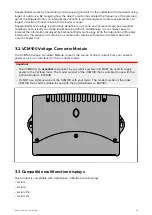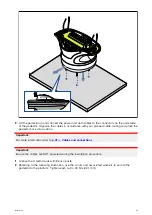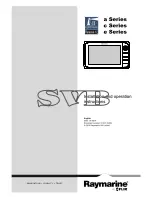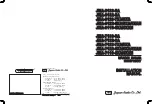
6.1 Potential ignition source
This product is NOT approved for use in hazardous/flammable atmospheres. Do NOT install in a
hazardous/flammable atmosphere (such as in an engine room or near fuel tanks).
6.2 Radar position overview
The optimum height for the Cyclone radar is a location that is high enough above the waterline to
give a long range line-of-sight to the horizon, but not so high as to be adversely affected by the
vessel's pitching and rolling.
The scanner must also be mounted where it is:
• Above head height.
• Easily accessible.
• As near as possible to the vessel's centerline.
• On a rigid and stable platform, capable of securely supporting the scanner under seagoing
conditions.
• For GPS, ensure unobstructed view of the sky. Avoid large structures above the antenna.
• Clear of large objects such as the flybridge, large engine stacks, searchlights, horns, masts etc.
• Clear of heat and fumes.
• At least 1 m (3 ft) from a magnetic compass or other scanners.
6.3 Radar scanner general location requirements
When selecting a location it is important to consider a number of factors.
Horizontal position
The radar scanner should be positioned as near as possible to your vessel's centerline.
Height
The radar scanner should normally be mounted as high as practical above the waterline:
32
Summary of Contents for CYCLONE
Page 2: ......
Page 4: ......
Page 8: ...8...
Page 20: ...20...
Page 28: ...28...
Page 40: ...Rear exit 1 Mounting surface 2 Power and RayNet connectors 3 Power and RayNet cables 40...
Page 42: ...42...
Page 52: ...52...
Page 58: ...58...
Page 64: ...64...
Page 69: ...Chapter 12 Operation Chapter contents 12 1 Operation instructions on page 70 Operation 69...
Page 80: ...80...
Page 84: ...84...
Page 88: ......
Page 91: ......
















































